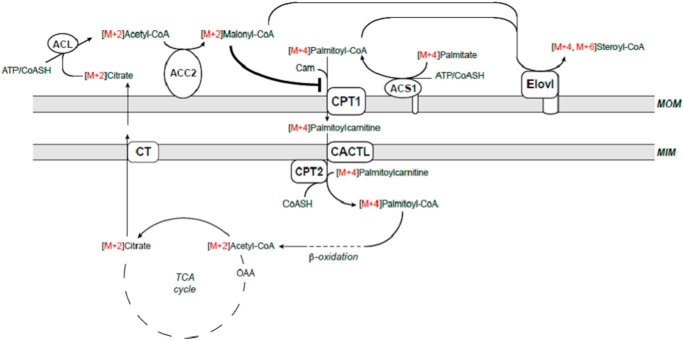FIGURE 4.
Schematic of proposed mechanism of fatty acid chain elongation in working rat heart perfused with [1,2,3,4-13C4]palmitic acid (M+4) and unlabeled glucose. Palmitic acid is activated by long-chain acyl-CoA sythetase (ACS1) and transported into the matrix by the mitochondrial carnitine system CPT1b, CACTL, and CPT2 for β-oxidation. The end product acetyl-CoA is converted to citrate by citrate synthase and exported to the cytosol catalyzed by the tricarboxylate transporter (CT). In the cytosol, citrate is converted back to acetyl-CoA and oxaloacetate by ACL, and the acetyl-CoA is carboxylated to malonyl-CoA by ACC2 on the mitochondrial outer membrane. Malonyl-CoA is then used as the chain extender to chain-elongate [1,2,3,4-13C4]palmitic acid to M+4 and M+6 stearic acid either on outer mitochondrial membrane or in the endoplasmic reticulum, catalyzed by Elovl6.

